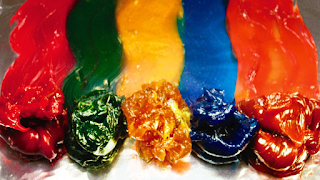6 Things to know and do before and after making a switch from one grease to another
Thomas Cipriani – Product Specialist at Robco
- Verify
what the OEM specifications state for type and NLGI grade of grease that
you should be using in your application.
- Verify
if what you are using meets those specifications
- Find
suitable grease options that meet the specifications in order to switch to
the proper grease option.
- Compare
the suitable greases by comparing their results in the key grease tests;
such as Timken OK load, 4-Ball EP Load-wear index, 4-Ball EP Weld Point,
4-Ball Wear-Scar Diameter, Drop Point, Pour Point, Operating Temperature
capability, Water Washout Test Result, etc...
- Once you
have selected the grease you would like to switch with verify if it is
compatible with the one in your system to be sure on how much you must
purge the system. The worst thing you can do is put one grease on top of
another without knowing if they are compatible as they will either harden
in the system or soften and both these can cause issues. (Rule of thumb is
always to purge as much of the old grease out as possible!)
- Make
sure to monitor the new grease’s life patterns to establish a new
re-greasing procedure.
6 Choses à savoir et à faire avant et après le passage d'une graisse à une autre
1.
Vérifiez
ce que les spécifications OEM indiquent pour le type et le grade NLGI de
graisse que vous devez utiliser dans votre application.
2.
Vérifiez
si ce que vous utilisez répond à ces spécifications.
3.
Trouvez
des options de graisse appropriées qui répondent aux spécifications afin de
passer à l'option de graisse appropriée.
4.
Comparez
les graisses appropriées en comparant leurs résultats dans les principaux tests
de graisses; comme la charge Timken OK, l'indice d'usure de charge EP à 4
billes, le point de soudure EP à 4 billes, le diamètre d'usure à 4 billes, le
point de goutte, le point d'écoulement, la capacité de température de
fonctionnement, le résultat du test de lavage à l'eau, etc.
5.
Une
fois que vous avez sélectionné la graisse avec laquelle vous souhaitez changer,
vérifiez si elle est compatible avec celle de votre système pour être sûr de la
quantité de graisse à purger. La pire chose que vous puissiez faire est de
mettre une graisse sur une autre sans savoir si elles sont compatibles car
elles durciront dans le système ou se ramolliront et les deux peuvent causer
des problèmes. (La règle de base est toujours de purger autant que possible
l'ancienne graisse!)
6.
Assurez-vous
de surveiller le cycle de vie de la nouvelle graisse pour établir une nouvelle
procédure de regraissage.




Comments
Post a Comment